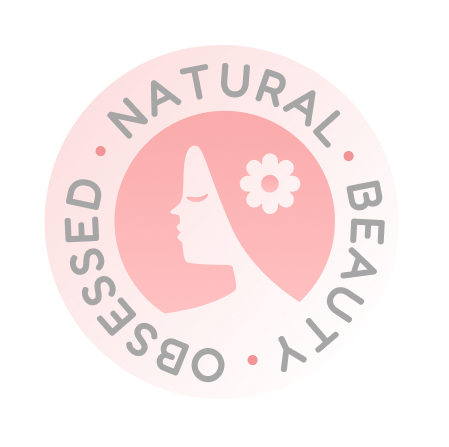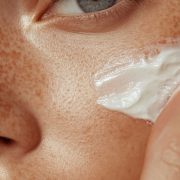A Breakdown of the Key Differences & How to Use Each for Flawless Makeup
Posted on April 4, 2025 Written by: 100% PURE®

Ever wondered why some powders make your makeup last all day while others give you that flawless, airbrushed glow? That’s where setting powder and finishing powder come in—but they’re not the same thing!
Knowing the difference can completely change your makeup game. Setting powder locks everything in place, keeping your foundation from creasing or slipping. Finishing powder, on the other hand, is all about that final touch, blurring imperfections and adding a soft-focus effect.
Choosing the right one depends on your needs, so let’s break it down and find out which powder is best for !
What is Setting Powder?
Setting powder is the secret to keeping your makeup in place all day. It works by absorbing excess oils and locking in liquid or cream products, preventing creasing, smudging, or fading.
This makes it a must-have for oily and combination skin types, as well as for anyone looking for long-lasting wear. Unlike finishing powder, which enhances the final look, setting powder is all about durability.
A great example is —a clean, talc-free option that mattifies without feeling heavy. If you want your foundation to stay fresh and flawless, setting powder is your best friend.

What is Finishing Powder?
Finishing powder is the final touch that takes your makeup from good to flawless. Unlike setting powder, which locks everything in place, finishing powder smooths out fine lines, minimizes texture, and gives your skin a soft-focus effect. It’s perfect for photography, special events, or anytime you want a perfected airbrushed look.
A great option is the , which not only blurs imperfections but also provides coverage, making it a versatile, dual-purpose powder. Whether you’re prepping for a big occasion or just love a polished finish, finishing powder is your go-to for a perfect look.
Setting Powder vs. Finishing Powder
Setting powder and finishing powder may seem interchangeable, but they play very different roles in your makeup routine. Understanding their differences can help you choose the right one for your needs.
|
Feature |
Setting Powder |
Finishing Powder |
|---|---|---|
|
Texture |
Lightweight, finely milled |
Ultra-fine, silky smooth |
|
Finish |
Matte or natural |
Soft-focus, blurred effect |
|
Purpose |
Locks makeup, controls shine |
Smooths texture, perfects look |
|
Best For |
Oily skin, long wear |
Photography, special occasions |
To those wondering if both can be used together—the answer is yes! If you want both longevity and a flawless finish, start with setting powder to lock in your makeup, then lightly dust finishing powder over the top. This technique is perfect for special events, photography, or achieving an ultra-smooth look. Just remember—less is more to avoid a heavy, cakey effect!
Best Powders for Different Makeup Goals
isn’t just about setting your makeup—it’s about achieving the perfect finish for your skin type and desired look. Whether you want a shine-free matte effect or a luminous glow, picking the right formula makes all the difference.
Matte vs. Dewy Finish
For those who prefer a matte finish, a setting powder with oil-absorbing properties is the best choice. These powders keep shine at bay, making them ideal for oily and combination skin. On the other hand, if you love a dewy, radiant look, opt for a finely milled finishing powder that adds a soft glow without making the skin look dry or flat.
Oily Skin Solutions
Oily skin tends to break down makeup faster, leading to unwanted shine and creasing. A lightweight, mattifying setting powder like is an excellent choice. This absorbs excess oil, keeps foundation locked in place, and prevents mid-day shine without feeling heavy or cakey. Its finely milled texture ensures a smooth application, making it a must-have for long-wear makeup routines.
Mature Skin Tips
For , heavy powders can settle into fine lines and emphasize texture. Instead, a soft-focus finishing powder, like , provides a lightweight, blurring effect that smooths out imperfections without looking dry or heavy. By using a light touch and focusing on areas that need a soft, diffused finish, without emphasizing fine lines.

How to Apply Setting and Finishing Powder the Right Way
Applying setting and finishing powder correctly can make all the difference in achieving a flawless, long-lasting look. Each powder has a specific role in your routine, and using the right tools and techniques ensures a seamless application.
Step 1: Prep Your Skin for a Smooth Base
Before applying any powder, start with a primer to create a smooth, shine-free canvas. The helps control oil and keeps the foundation in place, making it the perfect first step for long-lasting makeup.
Step 2: Apply Setting Powder to Lock in Makeup
Setting powder should be applied immediately after foundation and concealer to lock everything in place. Using a , press the powder onto areas prone to creasing or oiliness—like the T-zone and under the eyes. For a longer-lasting effect, try the baking method by letting the powder sit for a few minutes before dusting off the excess.
Step 3: Finish with a Soft-Focus Effect
Once your makeup is set, lightly dust the finishing powder over your face for a smooth, airbrushed look. Use a fluffy brush and apply a sheer layer, focusing on areas where you want to blur fine lines and imperfections. The key is to use a light touch to avoid a heavy or overly powdered finish.
Step 4: Lock Everything in with a Mist
To blend everything together and prevent a powdery look, spritz a hydrating mist as the final step. The helps set makeup while keeping the skin fresh and hydrated. It melts powders into the skin for a natural, seamless finish, ensuring your makeup stays in place all day.
By layering your powders correctly and using the right tools, you can achieve a flawless, long-lasting makeup look that stays fresh and polished from morning to night!
Mistakes to Avoid When Using Powders
Even the best powders can backfire if not applied correctly. From a ghostly flash in photos to an unnatural finish, small mistakes can make a big difference in your makeup look. Here’s what to watch out for:
1. Over-Applying Setting Powder
Too much setting powder can leave your skin looking dry, cakey, or overly matte. Instead of packing it on, use a light hand and press the powder into the skin with a damp . Focus on areas prone to creasing—like under the eyes and around the nose—rather than applying it all over. If you’re baking, be sure to dust off the excess to avoid a heavy, powdery finish.
2. Getting Flashback in Photos
Flashback happens when powders with light-reflecting ingredients (like silica or titanium dioxide) cause a white cast under camera flashes. To avoid this, choose a talc-free, finely milled setting powder like , and always test your makeup under different lighting before big events. Blending well and setting with a mist can also help reduce the risk.
3. Choosing the Wrong Finishing Powder Shade
While many finishing powders are translucent, some come in different shades. Using a powder that’s too light can make your skin look ashy, while a shade that’s too dark can alter your foundation color. If you’re using a tinted finishing powder like , make sure it complements your skin tone. When in doubt, opt for a sheer, colorless formula to keep your makeup looking natural.
Avoiding these common mistakes ensures that your setting and finishing powders enhance your look—rather than working against it.
FAQ Section
Is setting powder the same as finishing powder?
No, they have different purposes! Setting powder locks in the foundation and prevents creasing, while finishing powder blurs imperfections and adds a polished, soft-focus effect.
What happens if I don’t use setting powder?
Without setting powder, makeup may fade, crease, or become oily throughout the day—especially if you have combination or oily skin. It helps keep your foundation in place for long-lasting wear.
Can I wear finishing powder alone?
Yes! If you want a light, natural look, you can dust a finishing powder over bare skin to blur imperfections and reduce shine without the need for foundation.
What’s the best way to prevent makeup from looking cakey?
Use a light hand when applying powder, blend well, and finish with a hydrating mist like to melt the powder into the skin for a natural finish.
Does setting powder make makeup waterproof?
While setting powder helps with longevity, it doesn’t make makeup completely waterproof. However, pairing it with a setting spray can improve resistance to humidity and sweat.
Your Perfect Makeup Look Starts Here
Choosing the right powder is essential for a flawless, long-lasting makeup look. Setting powder ensures your foundation stays put while finishing powder gives your skin that smooth, perfect finish. Whether you’re looking for oil control, a soft-focus effect, or a natural glow, using the right products and techniques can transform your routine.
Find the perfect setting and finishing powder for your makeup needs at today!




